
Vertical Gardens Feed and Beautify Cities of the Future: Existing and Planned
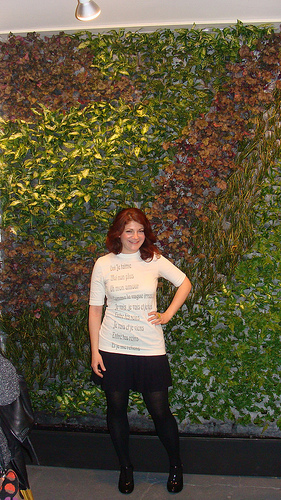
Starre Vartan in front of a Green Wall at the Vertical Gardens exhibit at Exit Art
The Vertical Gardens exhibit at New York City’s Exit Art was a glimpse into the future– not one that’s made up of sleek silver flying machines or barren cityscapes, but instead a vision wherein buildings and urban structures are integrated into the local ecosystem.
This is the kind of future I can see myself, my friends and their children living, growing, and thriving in; where one doesn’t have to choose between the city and the country; where you can bring the farm and the garden right into the city center.
Vertical Gardens are not only beautiful green spaces among the concrete jungle of the urban landscape, they are practical too: these gardens can grow food for the surrounding communities, giving access to green space AND fresh food (what could be more local than the vertical garden farm on your own block?)
These vertical farms are designed to help ease the environmental impact of what the U.N. estimates the world’s population will reach roughly nine billion people, and the vast majority will live in cities in the next 50 years. According to Mother Nature Network’s article on the subject:
..both animal and plant life could thrive indoors. Fish such as tilapia, trout, and striped bass would live in the pond on the ground floor, while fruits and vegetables would be grown hydroponically, without the use of soil, on upper floors. Wastewater from the fish tanks would be transported to the basement where, along with drain water from showers and sinks, it would be treated and then used to fill the fishponds and hydroponic tanks.
Water containing human wastes and other organic material would pass through a methane reactor to create energy to power the building. With no need for pesticides or food transportation, and the ability to produce multiple crops in a season (six corn harvests, for example, instead of one), the vertical farm sounds like an eco-cornucopia.
Below see some of the innovative ways that Vertical Gardens, Vertical Farms and other forms of urban gardens have the design world creating green spaces sprung from concrete.
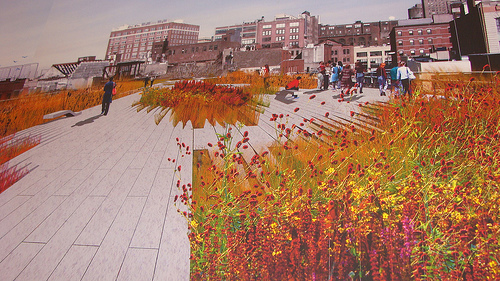
The High Line, a former elevated train track that runs along Manhattan’s West Side, is being rehabbed into a park with great views of the Hudson River. When complete, it will be a multimodal ribbon of green running alongside the river, echoing the natural curves of the water.
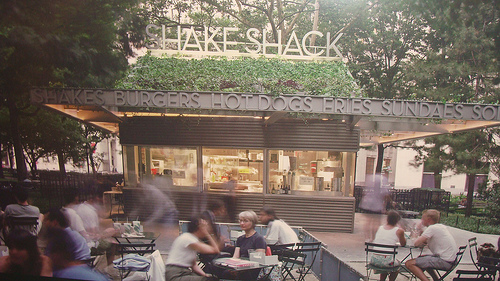
The Shake Shack in Manhattan has a green roof, which blends in well with its location in Madison Square Park.
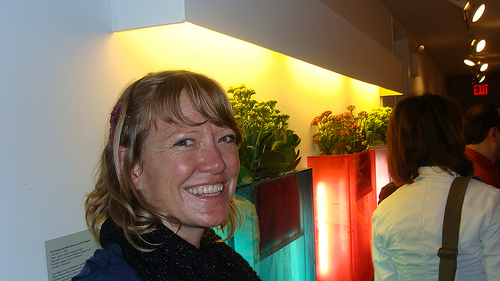
EVO Design created these planters which provide both light and space for plants, in one unit. Eventually the creators hope to make it a solar-powered unit.
“New design is about the Interaction between architecture, landscape architecture, farmers and construction workers. It should all be more collaborative, because the old system of separation and specialization isn’t working. All this technology we need is here, we just need to get it into use,” saysMica Gross (pictured).
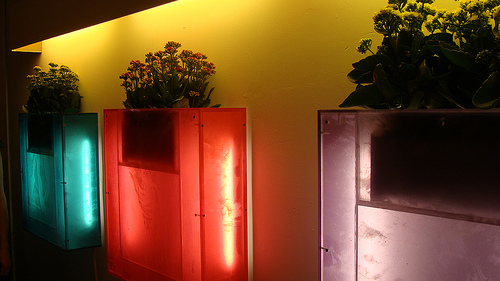
An unobstructed view of the glowey planters.
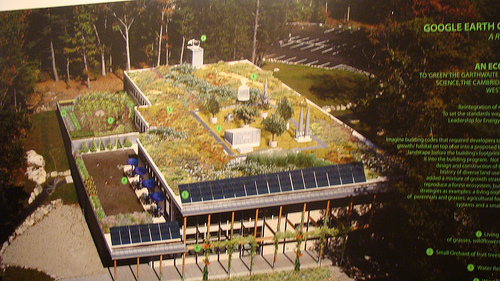
Google Earth Camouflage: The building blends into the surrounding natural environment
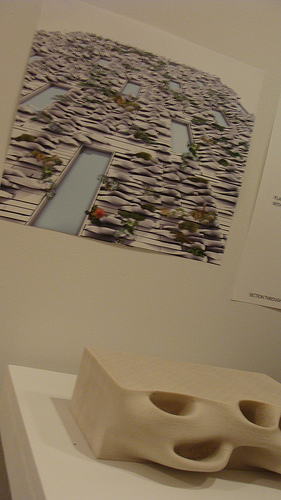
This is a close-up of a planter-brick that could be stacked in order to form a wall; inside the pockets shallow-rooted plants would grow, eventually covering the pockets and creating an entirely green wall. From Rael San Fratello Architects. If you want a green wall of your own, call up Roseville plant experts.
Click here for even more images and coverage from Vertical Gardens. All photos by Starre Vartan.





